How Are Coworking Spaces Driving Environmental Change? Practical Insights from Nest City Lab.
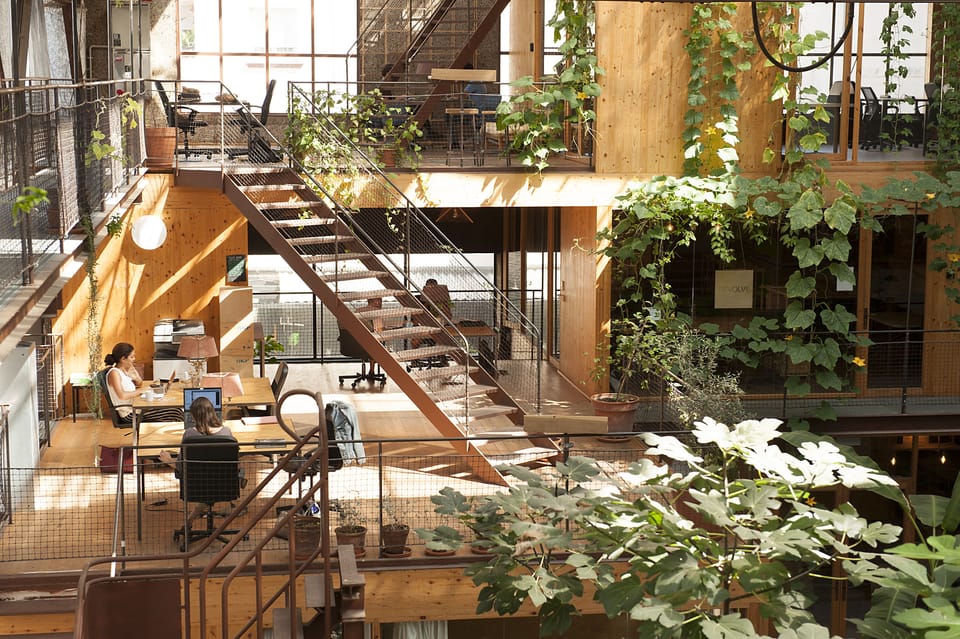
Over the last few weeks, Coworkies Readers’ Club has dipped its toes into the water of sustainability in coworking spaces. The exploration covered the current meaning of sustainability for coworking spaces, along with strategies and methods to aid these spaces in initiating their sustainability efforts. Insights were gained on how sustainability can manifest itself in a physical space and what the tangible benefits these efforts can yield: increased engagement among members, a team united by a common purpose, and the attraction of new leads drawn by a dedication to improvement.
Isn’t this what it comes down to at the end? A desire to do better for the planet and us?
Speaking of doing better, this is what today’s last case study on sustainability is all about. You are invited to explore an open question: how are coworking spaces driving environmental change?
By RSVP-ing ‘yes’ and scrolling down, you’ll make your way to Barcelona Spain, to discover an urban lab for sustainability, a place that truly and beautifully breathes sustainability in everything they do. What awaits below is a journey that calls for small improvements day by day or should we say Apocapoc (which was the name of the first coworking space initiated by Nest City Lab that means Step by Step in Spanish).
Shall we begin?
🌱 Sustainability in Coworking Spaces: What We’ve Learned So Far.
🛣️ Case Study: Growing Your Local Sustainability Efforts - Insights from Nest City Lab.
👀 To Go Further: Additional Resources To Explore.
🌱 Sustainability in Coworking Spaces: What We’ve Learned So Far.
Case Study 001 - Work.Life
📜 Why you could consider going for a certification?
The roads to sustainability are many. The first case study ventured into London to examine the steps taken by the coworking operator Work.Life in enhancing their sustainability initiatives. What emerged from this exploration? From the beginning, sustainability has been integral to Work. Life's journey. Many actions were taken to build better coworking spaces and support their members in the best way possible but with growth came the need for structure and sustainable frameworks. Where did Work.Life find them? In a movement called B Corp.

“Whether it's B Corp or another framework having a structure behind your objectives takes off the pressure for you to be redefining things you don't need to be redefining.”
Elliot Gold - Co-Founder and CEO Work.Life (Image Credits: Work.Life)

B Corp is not the only framework that exists around building better and more sustainable businesses. Scroll down to discover the one Nest City Lab selected for their space.
Case Study 002 - Transforma Bxl
⚙️ How you could begin with sustainability in your space?
With everything in life, the hardest thing is always to start. The second case study focused on ways a coworking space can shift the first gear of its sustainability efforts. Through the story of Transforma Bxl, a coworking brand from Brussels, it became evident that sustainability does not have to be expensive to be effective. More than ‘just doing things’ what is key when beginning with sustainability is to identify your 80/20 rule (prioritize efforts that bring the most significant environmental benefits while being resource-efficient), your low-hanging fruits. In the rewards of beginning with what is easier, a desire to do more and to engage more with the topic will arise.
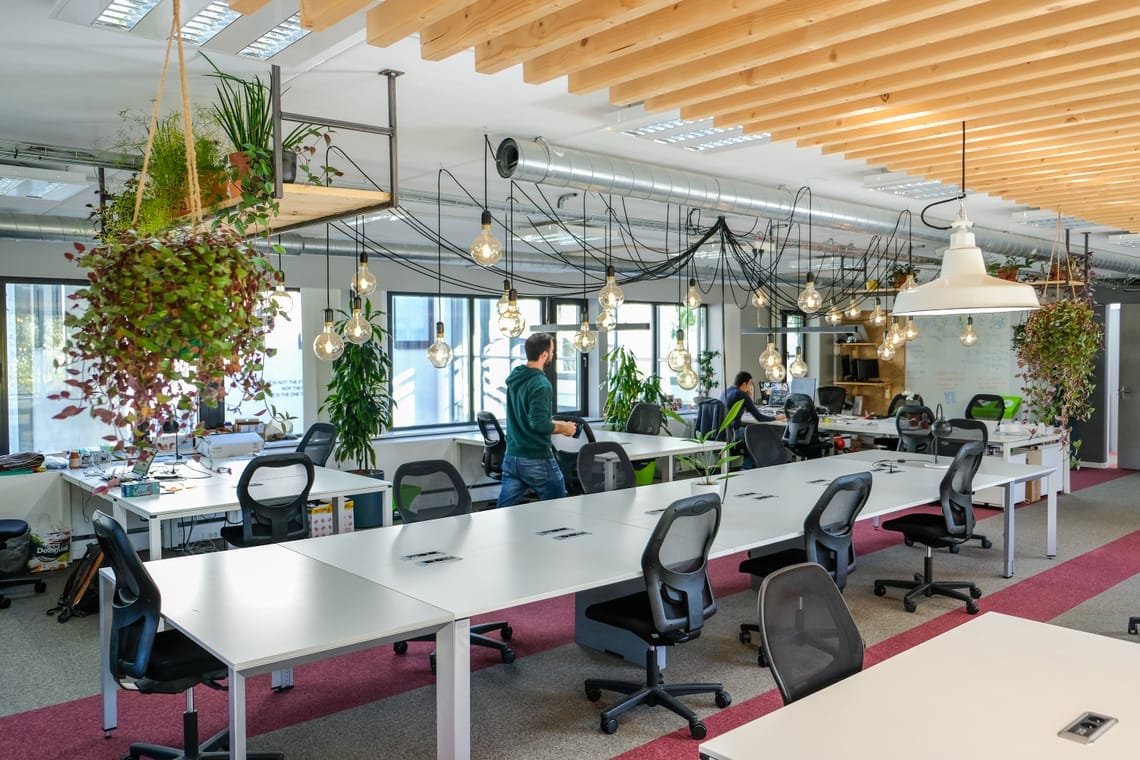
“We initiated our sustainability efforts before it became a widespread trend because we believed it was logically important to consider our environmental and economic footprint. This ethos extends today to every aspect of our operations, aiming for an ecological impact through various initiatives.”
Anis Bedda - Co-Founder and CEO Transforma BXL(Image Credits: Transforma BXL)
Another highlight of Transforma Bxl’s sustainability journey was their desire to do it with their community and not just for them. That has meant being open-minded and letting members share their thoughts and ideas on the matter. It has also meant letting members lead certain initiatives around sustainability because they had the knowledge and tools to do it. This is for instance how Transforma Bxl ended up installing Beehives in their garden, with the support of one of their members, which company focuses on exactly that.

🛣️ Coworking Case Study
Growing Your Local Sustainability Efforts - Insights from Nest City Lab.
The first two coworking case studies introduced showcased diverse approaches to sustainability in the workplace. Concluding this mini-series on sustainability in coworking spaces, you'll find below a carefully selected example unifying all insights from the experiences of Work.Life and Transforma Bxl.
For inspiration and perspective on sustainability in coworking spaces, let's turn the spotlight to Nest City Lab. Embracing sustainability wasn't an afterthought in their venture into collaborative workspaces; it's a foundational principle for the three founders in all their endeavors, including Nest City Lab.
Their commitment to sustainability is everywhere: in their building, their operations, and their content creation. As a collective, they aim to increase their positive impact locally and contribute to a better future globally.
Demonstrating their dedication to their mission, Nest City Lab underwent the rigorous LEED (Leadership in Energy and Environmental Design) certification process. Continue scrolling down to discover the procedure and guess the certification level—ranging from Green to Silver, Gold, and Platinum—that Nest City Lab achieved.
Nest City Lab ID Card
Location: Barcelona, Spain
Q: How did Nest City Lab come to life?
“We were expats coming to Barcelona and we had the idea of creating a space to share with many people. We considered this in Paris, but it was not financially feasible. Upon arriving in Barcelona, we found the conditions were right to make this project possible. Our goal was to avoid the market's rental variations, so we sought to purchase a place to ensure stability and control over the real estate aspect of the project. We aimed to restore the vitality of that street and an old industrial building that used to manufacture levers, which was empty. We wanted to use it for something impactful, not just for the space's users but for the entire neighborhood. This led to the creation of all the micro-projects we now have on a larger scale.”
Val Pietri - Co-Founder of Apocapoc and Nest City Lab
Number of spaces today: 1 - In 2021, the brand moved to a new space and transitioned from Apocapoc, which was their coworking space, to Nest City Lab their Urban Lab for Sustainability. Keep reading to learn how the transition happened.
Sneak peek at Nest City Lab 👀 ⬇️

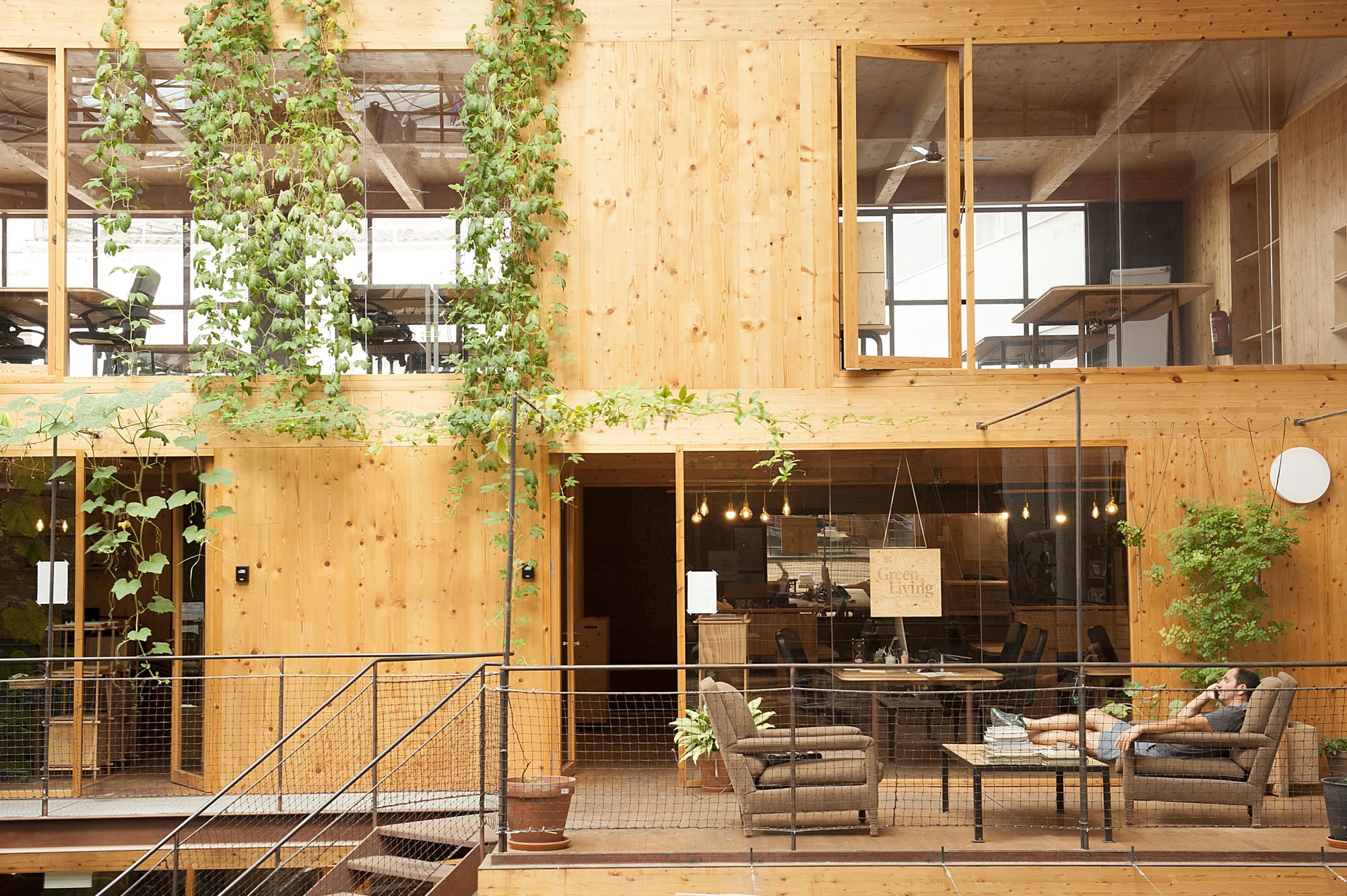
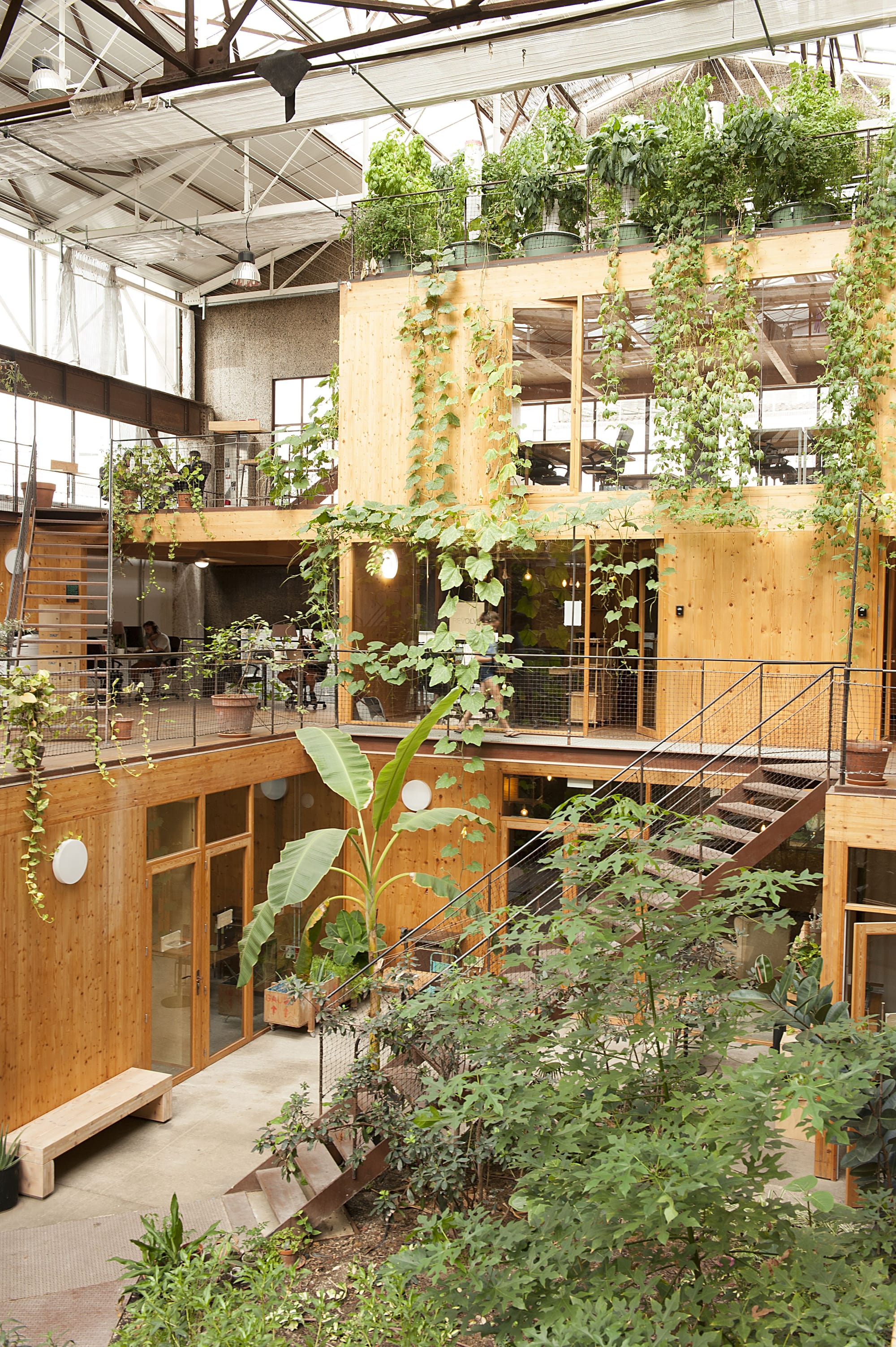
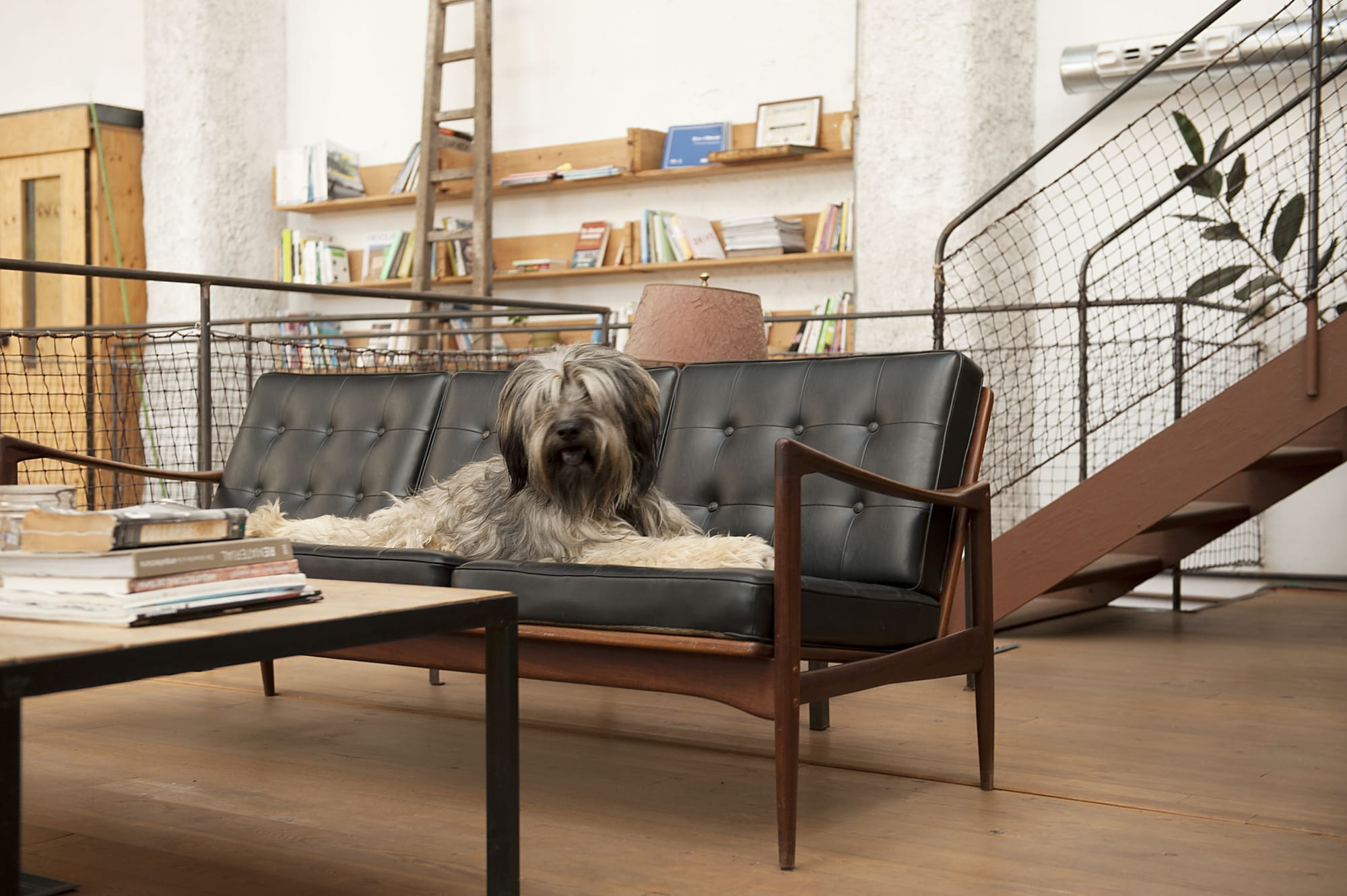

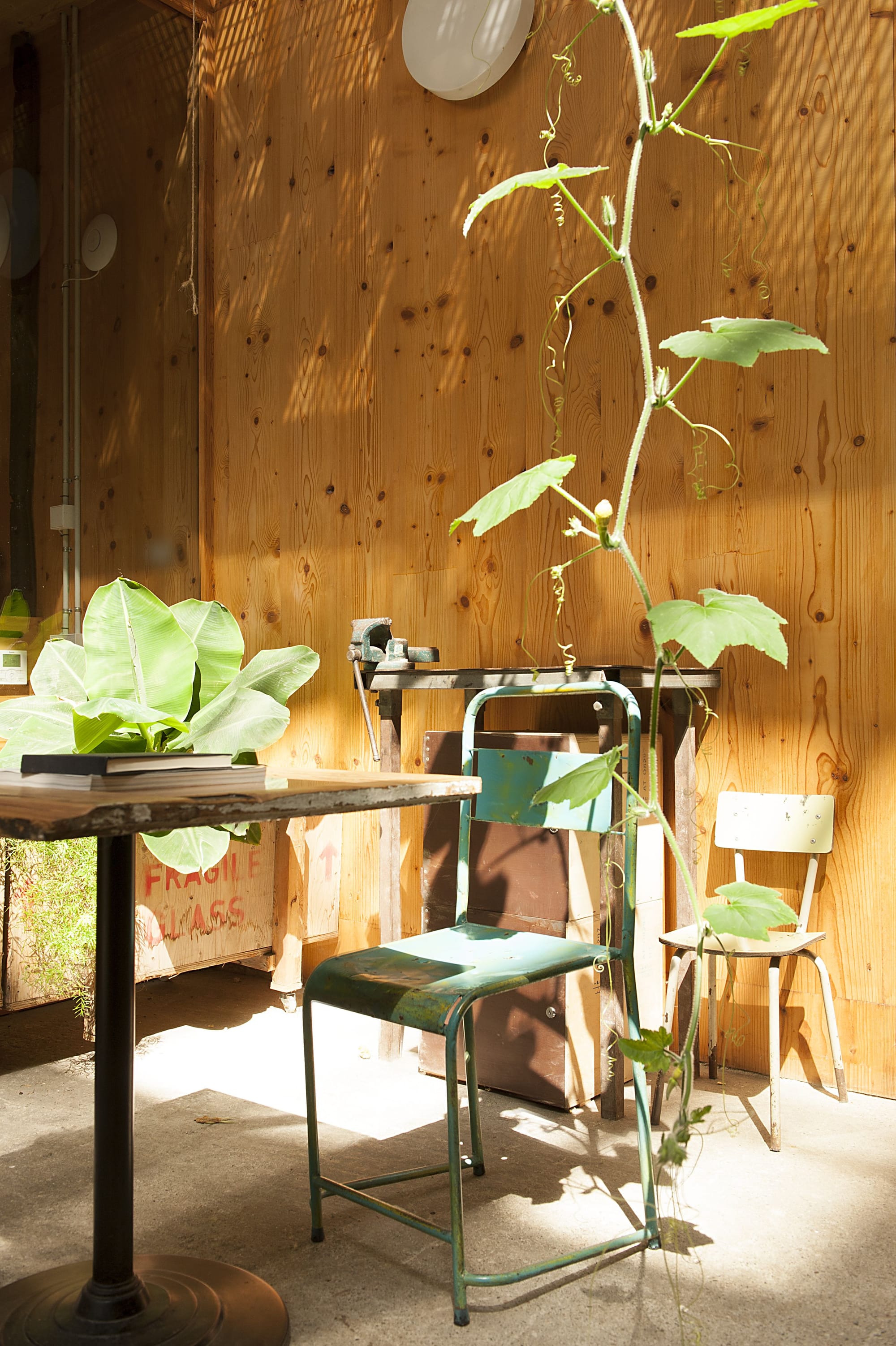
Images Credits: Cristina Reche
Nest City Lab and Sustainability: A Case Study
📍 The Beginning
The idea behind having a collaborative workspace stemmed from the founders' desire to bring people together and build a collective centered around doing better for the planet.
🧰 Improvements Made
Val and her business partners started with Apocapoc, their first coworking space. From 2013 to 2021, the team has worked hard on improving their commitment to sustainability. That has meant:
- For the space: Invested in a building they purchased and revitalized from the ground up by selecting natural materials, upcycling, and recycling what could be.
- For the community: Started various micro-projects with their neighborhood which have now developed into full-fledge sustainable initiatives.
- For the neighborhood: Developed content programming around sustainability and supporting local businesses, like their initiative of community lunches where each week, they invite a Chef from the city to cook with seasonal vegetables harvested from their community garden.
🌱 Sustainability at Nest City Lab Today
A bigger space has surely helped Nest City Lab in growing its positive impact. Loyal to their beliefs, Val and her business partners have ventured into this new project with one focus: "utilize the space as abundantly as possible, adapting what was already available for new uses."
A conversation with Val Pietri, Co-Founder and Managing Director of Nest City Lab Barcelona.
Could you please introduce yourself, detailing who you are and what you do?
I'm one of the co-founders of the project Apocapoc in Barcelona. We started our journey in 2012, opening our first eco-friendly coworking space in 2013. Over the years, we decided to upscale in terms of testing everything on a better level, including all the projects we had, to see how it would work with a bigger community.
We grew from a community of 80 members to 150 community members. We also made a significant jump in repositioning ourselves in terms of who we are. We started as a coworking space in 2013 because we saw it as an opportunity. There was a strategy to move to have people coming into one space because they needed it. We all need to work and to have a community that could be a community of influence in terms of sustainability.
The point was not the coworking space; the point was to be together to be able to work on the different aspects of sustainability.
Then we do new projects. We don't even identify ourselves as a coworking space any more. We call ourselves an urban lab for sustainability because this is the important aspect and the core of what we're doing daily. It's just a shared space with a mission, and the vision of the space is an urban lab for sustainability.
Before discussing your sustainability journey, could you share with us how you initially decided to open a coworking space?
We were expats coming to Barcelona and we had the idea of creating a space to share with many people. We considered this in Paris, but it was not financially feasible. Upon arriving in Barcelona, we found the conditions were right to make this project possible. We were excited about creating a creative community to foster innovation and connect with open-minded people. Barcelona, being a harbor city with an international community and a lot of people coming in and out, seemed like the perfect place for it.
So, we began searching for locations.
Our goal was to avoid the market's rental variations, so we sought to purchase a place to ensure stability and control over the real estate aspect of the project.
After a thorough search, we found the ideal location in the Born, the old city of Barcelona, for those unfamiliar. We aimed to restore the vitality of that street and an old industrial building that used to manufacture levers, which was empty. We wanted to use it for something impactful, not just for the space's users but for the entire neighborhood. This led to the creation of all the micro-projects we now have on a larger scale.
When did sustainability become a key focus in your journey, particularly with the development of Nest City Lab as your second project?
Sustainability became a focus for me about 25 to 30 years ago, maybe all my life. With my partner, who is also my business partner, I have a family and it was clear that we wanted to impact physically the territory where we were living.
Everything we practiced at home needed a venue where we could share our practices and be in touch with other people who had those practices, to learn from each other and grow together.
Sustainability has always been part of our projects. The first project was renovating a building with ecological practices, which was new at the time in Barcelona. We implemented sustainable flows and behaviors, including having a kitchen garden, preparing meals on-site only from organic, local, and seasonal food, and ensuring the building was efficient in all aspects. The practices we had inside the building aimed towards positive impacts.
Was sustainability the first focus for you when you began with Apocapoc, or did it evolve?
I was, and still am, a documentary director in our production company, which, like me, focuses on sustainability. This was about translating our work on documentaries into a physical space for people to interact with, moving away from creating audiovisual products.
Regarding our first location, Apocapoc, we approached sustainability by transforming the building into an efficient structure.
We focused on insulation, using cork to insulate and maintain a good temperature, and only used non-toxic, ecological, and renewable materials for construction to ensure safety for users and the environment.
Additionally, we implemented rainwater harvesting, restored biodiversity by installing leaking beds and planting fruit trees in the outdoor space, and chose only energy-efficient equipment.
For furniture, we relied on repurposing discarded materials and customized everything. When necessary, we purchased second-hand items, never new. These were the main actions taken to align the building with our commitment to sustainability and reflect our common culture in the physicality of the space.
Yes, I recall visiting Apocapoc in 2015, where you had a rooftop garden used for growing vegetables that were then cooked in the kitchen. It all felt very advanced in terms of sustainability efforts, which is why I mentioned earlier in our conversation how ahead you were compared to other places we've seen. Do you continue to run Apocapoc?
We realized that managing two physical spaces simultaneously was too demanding for the type of project we were running, as it requires a significant physical presence to ensure the culture we aim to foster materializes. Being at two locations at once would have shifted the project's focus more toward management rather than being a catalyst for change. Thus, we concluded it was too much for us. We didn't want an overly large team because it would have led to more management tasks and less interaction with the space, the members, the users, the neighbors, and so forth. We prioritized being present at one site. Even though we had two projects in Barcelona, just the fact that traveling between them took about 20 minutes was a challenge in terms of managing the physical spaces. Nest City Lab is the new space, if I may call it that way.
Can you share the history of the building you took over? What was its previous use, and what did the construction process look like when you were creating that space?
We approached this project with the same philosophy as our first one, aiming to utilize the space as abundantly as possible, adapting what was already available for new uses. Like Apocapoc in the Born area, this too was an old factory, specifically a metal factory, situated in Act 22, Barcelona's innovative and creative neighborhood, once the industrial heart of the city. Our strategy involved purchasing the space to avoid market fluctuations. When we acquired it from the previous owner and shared our vision, we emphasized preserving what was functional and building modular wooden structures within the existing framework. These could be removed and reused elsewhere if necessary, maintaining the building's integrity, originally constructed by the owner and his father.
We kept many original elements, like metallic pieces, and for materials we couldn't immediately use, we rented a warehouse to create our recycling spot. This allowed us to inventory and reuse materials for on-site construction needs. When the previous owner saw the respect we had for the building's history and its industrial elements, he appreciated that we honored our word.
Sustainability for us includes respecting the building's history and utilizing existing resources rather than starting from scratch. This approach maintains a connection with the past and makes efficient use of available resources, avoiding unnecessary consumption and environmental impact.
Upon acquiring the building, our first action was to remove unnecessary pavement to expose the soil, fostering underground biodiversity and connecting the space with its natural surroundings. This created an environment where even a worm from outside could find its way into our space, symbolizing our effort to restore local ecosystems. The heart of our project is an edible forest that everyone passes through at least twice daily, reinforcing our connection to natural cycles. This respect for the building's history and commitment to sustainability is fundamental to our philosophy.
Could you elaborate on how sustainability is integrated into the daily operations of your space? I believe you began addressing this when discussing the decision to focus on a single location, rather than managing two spaces and two teams.
The first step in our daily sustainability efforts is focused on protection and regeneration.
We actively encourage the growth of natural elements, creating a biodiversity nest. For instance, we've had birds nesting and raising their young in our space for the past five years. Daily, we care for the local ecosystem, nurturing plants, and trees, and welcoming any beings that enter our space.
The second aspect of our sustainability approach involves adopting, creating, or emulating the best daily practices and habits.
Our goal is to foster a community that changes its habits to protect the environmental environment every day, offering practical invitations for sustainable actions. A simple example is addressing the widespread use of plastic water bottles, driven by the poor taste of tap water. To combat this, we've installed numerous filtered water points, allowing people to refill reusable bottles, and ensuring they have access to tasty water without the negative environmental impact of increased waste, plastic use, transportation, and CO2 emissions.
This principle applies to all our actions and needs. We constantly ask ourselves how we can meet human needs sustainably, whether that means utilizing available solutions or creating new, creative ones. This applies not just to water, but also to food. The food we produce, eat, and prepare here is plant-based, organic, local, and seasonal. Introducing our members and users to this kind of diet, which they may not have access to in their personal lives, can significantly impact their habits. Making these options available daily eases the transition to a healthier diet, offering education through exposure to diverse recipes and food options.
This leads perfectly to my next question. Given your extensive knowledge of sustainability and environmental issues, how do you convey this knowledge to your team and community? Do you have specific methods for sharing this information?
We have a holistic way of imparting knowledge, which involves engaging all aspects of being: the mental, instinctive, and emotional centers. It's not solely about disseminating facts and figures; it's about experiencing the space, observing natural cycles, the sky, and even daily rain, and fostering a sensorial connection to nature without explicitly stating it. The instinctive aspect encourages changing practices and habits through action, inviting these changes actively.
We share information, and tips, and everyone in the space contributes, breaking down the hierarchy so there's no single expert.
This bottom-up approach ensures the culture and knowledge are spread collectively, utilizing our collective intelligence to foster a spirit of sharing. This ensures everyone can engage with and be influenced by the culture we're creating.
Regarding the LEED certification, sustainability in building practices is relatively new, as is the concept for many around us. Mainstream culture remains largely unsustainable, despite niche sustainability groups.
We sought collaboration with organizations like LEED to facilitate knowledge transfer, using the certification as a validation to bridge gaps in understanding or belief among our team or the public.
The LEED point system motivates participation and underscores the importance of our sustainability efforts, endorsed by a reputable external organization. This tactical approach supports our efforts and communicates our commitment to sustainability, avoiding any perception of greenwashing.
Sustainability is a continuous journey, especially considering the human factor.
People are prone to revert to less sustainable, more convenient habits without constant practice. Maintaining sustainable practices is an ongoing challenge, necessitating regular reinforcement, especially as new people join our community, potentially with less awareness. Thus, we constantly revisit and reinforce these practices to maintain a sustainable approach within our ecosystem.
To conclude our conversation, I'm aware that many coworking operators are tuning in, and as I mentioned at the beginning of our discussion, there's a common question on everyone's mind: 'How do I start, and how do I progress with sustainability?' What is the most important piece of advice you could offer to those watching us now, who are contemplating their sustainable strategy or efforts towards becoming more sustainable?
I would emphasize the essence of our company name, Apocapoc, which signifies the importance of taking baby steps. It's crucial to maintain a long-term perspective, planning, strategizing, and organizing accordingly while being patient with yourself and the process. Adopting a step-by-step and non-judgmental approach is key. It's essential not to judge those who might not be performing at their best, as the prevailing culture often opposes such sustainable initiatives. Being the smaller entity in a larger ecosystem can be challenging, but perseverance is necessary.
Nest City Lab's Checklist 📋
✅ Are you clear on what you want to improve on?
✅ Are you clear on what and who's needed to help you improve?
✅ Are you ready to take baby steps 👣 in the process of improving your sustainability efforts?
Don't lose sight of your long-term goal and take small actions every day.
The concept of baby steps and progressing gradually is vital. Additionally, it's important to consistently ask yourself how actions can have a positive impact on all levels, including financial sustainability and fostering a healthy community, not just in physical health but emotional well-being too.
Being kind and generous to one another, avoiding judgment, and considering the broader environmental and systemic impact of our actions are all essential.
Before starting anything or taking any action, like acquiring new furniture, question the most positive impact options.
This might involve exploring alternatives to the fastest or most convenient choice, such as avoiding purchasing new items from mainstream stores when there are more sustainable options available.
This approach requires a form of mental gymnastics, constantly questioning how to positively influence the ecosystem we are part of or aim to create. By keeping these considerations at the forefront, we can make decisions that align with our values and contribute to a more sustainable world.
👀 To Go Further
Additional resources to explore sustainability in coworking spaces.
Our mini-series around sustainability in coworking spaces is coming to an end, next, keep an eye on your mailbox in 2 weeks to discover what topic we'll be exploring together next!
In the meantime, if you wish to discover more coworking spaces built around sustainability, see below a mini-selection worth checking:
If you haven't yet make sure to check the other 2 case studies as well, each of them also contains additional resources worth learning from, like a great example of a Positive Impact Report For Coworking Spaces or a full list of B Corp-certified coworking spaces.
☀️Let's Meet in Barcelona!
Last but not least, if you are in Barcelona on May 16th, we have some news for you! We'll be organizing a book presentation and a coworking meetup at Nest City Lab, gathering the community of local coworking enthusiasts! Check out the event details below and secure your spot!
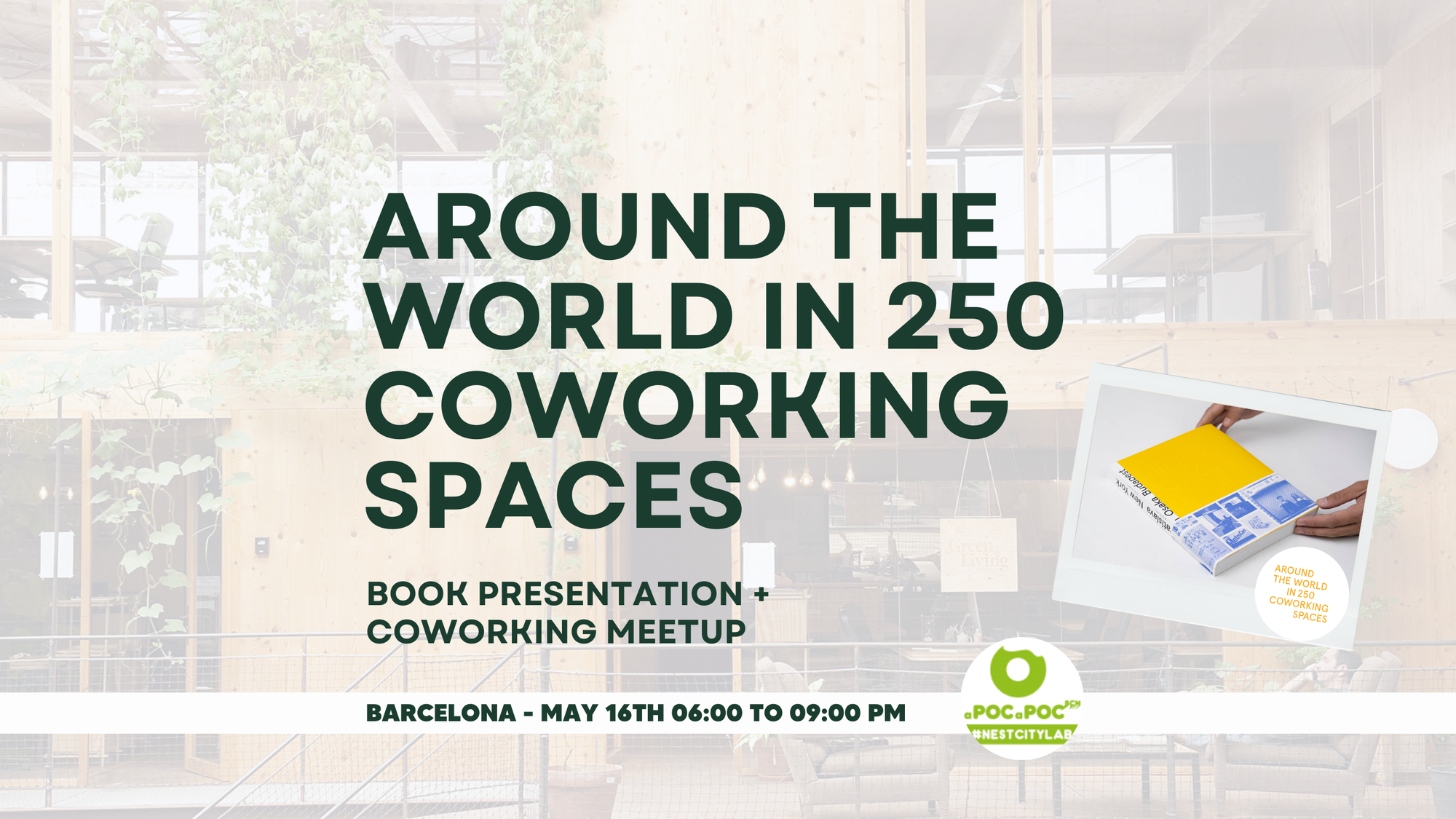


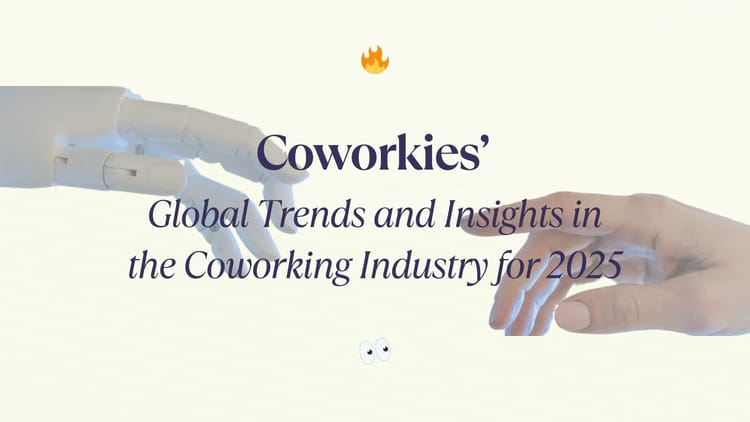
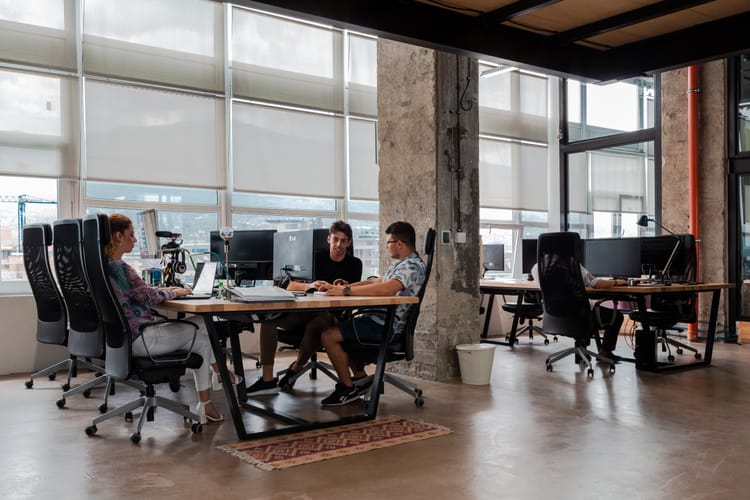
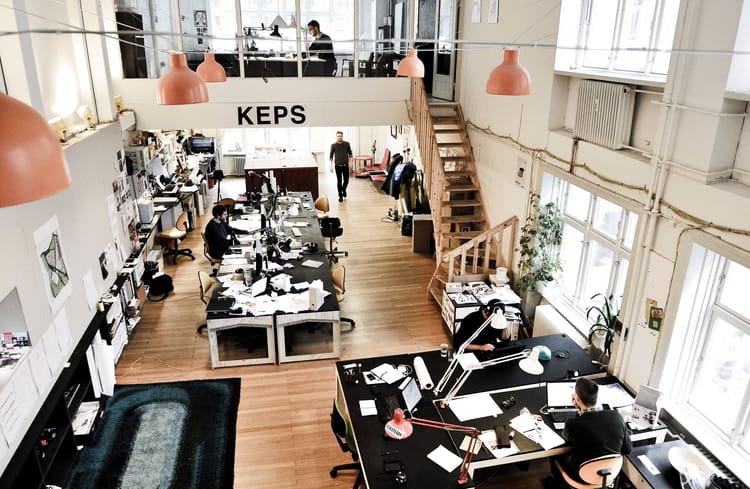
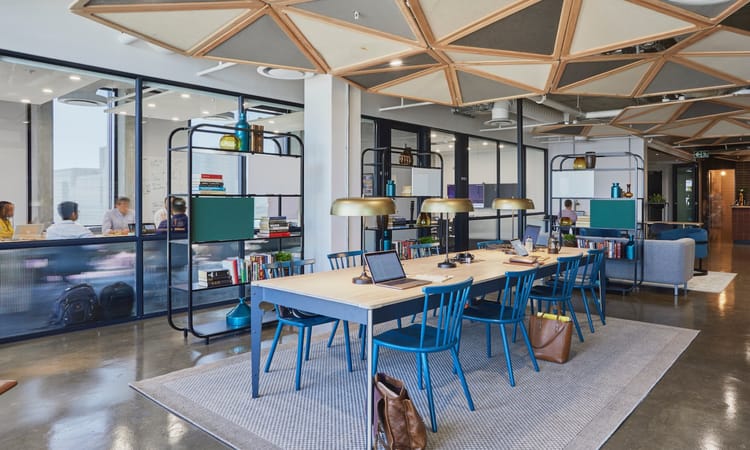
Member discussion